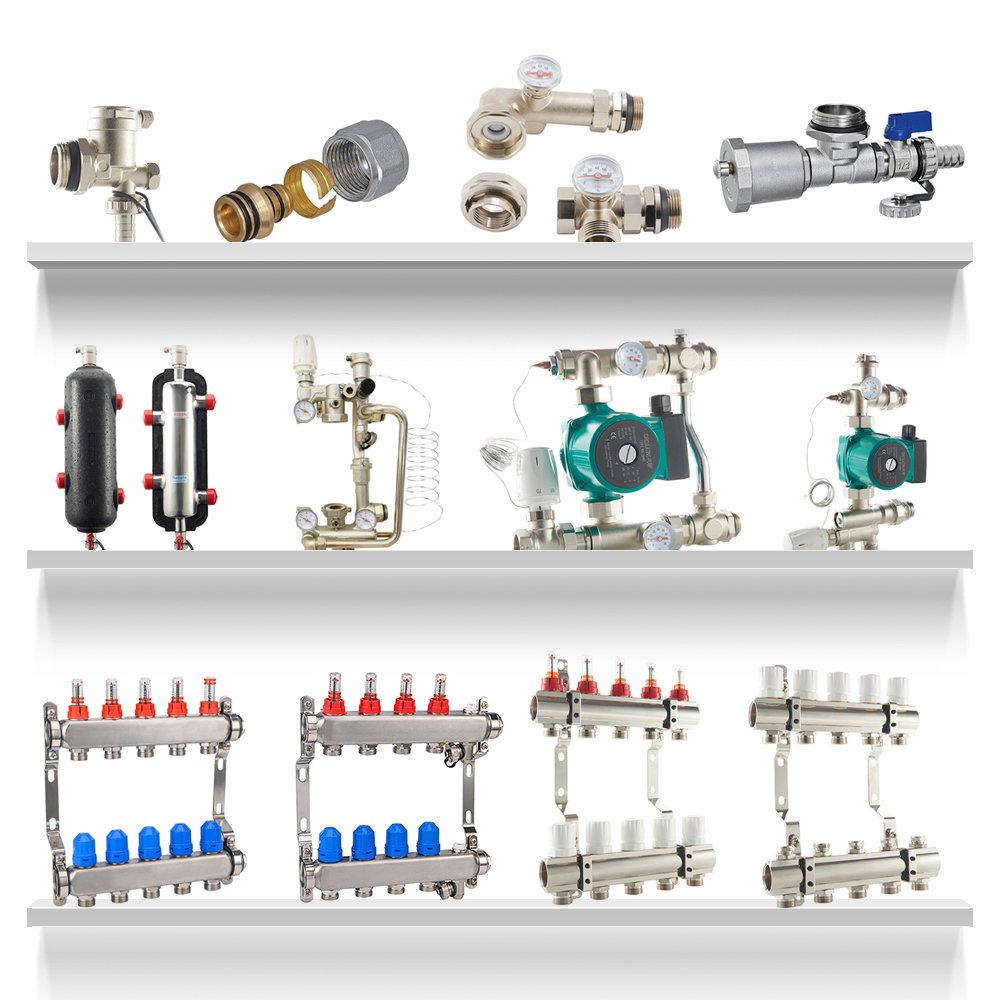Are you hearing strange noises from your underfloor heating system? This issue can be both annoying and concerning, as it may signal a deeper problem with the system. If left unchecked, noisy underfloor heating could lead to inefficiency, uncomfortable living conditions, or even damage to the system itself. In this article, we’ll help you understand the common causes of underfloor heating noise and what you can do to fix them.
Noisy underfloor heating systems are usually caused by trapped air, inadequate flow, or an issue with the pump. These problems can lead to inefficient heating, high energy costs, and even system failure. We’ll walk you through the causes and solutions to get your system running quietly again.
Understanding the source of the noise in your underfloor heating system is key to solving it. From air trapped in the pipes to issues with the flow temperature or pump, these noises are often a symptom of a larger issue. Let’s explore the most common causes of underfloor heating noise and how you can resolve them for a quieter, more efficient heating system.

Does underfloor heating manifold need a pump?
Underfloor heating systems often rely on a pump to circulate hot water through the manifold. The pump ensures that the water flows at the right pressure and speed, keeping the underfloor heating flow temperature stable across all circuits. Without a pump, the water may not circulate effectively, leading to uneven heating or the system becoming noisy as the water struggles to flow.
The manifold, while essential for distributing water to different heating circuits, does not function alone. It needs the pump to ensure consistent water pressure and flow rate. If your system is noisy, it could be a sign that the pump is malfunctioning or incorrectly sized. A pump that’s too powerful can cause vibrations and noise, while a pump that’s too weak might not circulate the water properly, causing cold spots and noise due to irregular flow.
If you’re hearing gurgling or banging sounds, it’s likely a problem with the flow or the pump. Adjusting or replacing the pump may solve these issues and restore quiet operation.
What is the downside of underfloor heating?
Underfloor heating offers many benefits, such as evenly distributed heat and energy efficiency. However, there are some downsides that could lead to problems, including noise. One downside is that underfloor heating systems are susceptible to air buildup in the pipes, which can create gurgling or hissing noises. Air in the system interferes with the water flow, causing pressure fluctuations and ultimately leading to noisy operation.
Another issue with underfloor heating is that it can take longer to heat up compared to traditional heating methods. While this isn’t typically noisy, it can lead to inconsistent room temperatures if the system isn’t properly calibrated. The flow temperature settings might need adjustment to maintain comfort and avoid system strain, which could lead to noise.
Additionally, underfloor heating systems are usually hidden beneath floors, which means they are harder to access for repairs. Any issues such as leaks or air blockages can be difficult to fix without disturbing the floor, leading to additional costs and noise while troubleshooting.
Where is the best place for an underfloor heating manifold?
The best place to install your underfloor heating manifold is in a central, accessible location. Common options include utility rooms, dedicated cupboards, or wall-mounted panels. The location should be easily reachable for regular maintenance and troubleshooting, which can help prevent future noise issues.
It’s also important to consider the position relative to the heat source. Manifolds should be as close as possible to the boiler or heat pump to minimize heat loss and maintain optimal flow temperature. Proper positioning can reduce the risk of pressure fluctuations and air traps that could cause noisy operation.
For large systems, you may need multiple manifolds placed strategically around the property. Ensuring each manifold has adequate access for maintenance can help identify and fix problems like trapped air or low water pressure, which can contribute to noise in the system.
Should an underfloor heating pump run constantly?
Ideally, the underfloor heating pump should not run constantly. Running the pump continuously can put unnecessary strain on the system and increase energy costs. The pump should be activated only when the system needs to circulate water to maintain the desired temperature, based on your underfloor heating control settings.
If your pump runs constantly, it could be a sign that the system is not properly calibrated or that there’s an issue with the temperature sensors. Running the pump without pause can also cause it to overheat, leading to wear and tear that could result in noisy operation.
To prevent this, ensure that your underfloor heating system is correctly balanced, with a thermostat that regulates the pump’s operation. This will allow the pump to work efficiently, maintaining a consistent flow temperature without overworking itself and causing unnecessary noise.
Is it cheaper to leave underfloor heating on all the time?
Leaving your underfloor heating on all the time is not always cheaper. While it might seem convenient, the energy cost of running the system continuously can add up quickly. Underfloor heating works most efficiently when it’s turned on and off as needed, based on your heating schedule and desired floor temperature.
If you leave the system on all the time, you may end up heating your floors when you don’t need to, leading to higher energy bills. Instead, use a programmable thermostat or underfloor heating control system to optimize the heating schedule and keep the pump running only when necessary.
In fact, turning off the heating when you’re not at home or when the rooms are not in use can significantly reduce energy consumption and prevent unnecessary noise. Ensure the system is set to run only during peak hours or when you’re actively using the space.

How do I stop my heat pump from running constantly?
If your heat pump is running constantly, there are a few steps you can take to stop it. First, check the settings on your thermostat and underfloor heating control system. Ensure that the system is not set to “continuous” mode, as this will force the pump to run non-stop.
Another potential issue is that the system might be overheating, causing the pump to work harder to maintain the temperature. Check for any blockages in the system, as these can affect water flow and force the pump to overcompensate. Cleaning filters and ensuring that the flow temperature is set correctly can help improve efficiency.
If the pump continues to run non-stop despite these efforts, it could be a sign of a malfunction. In that case, it’s a good idea to have the system inspected by a professional to ensure that the pump is functioning properly and that there are no underlying issues causing the excessive operation.
Conclusion
Noisy underfloor heating can be caused by a variety of factors, including trapped air, improper pump settings, or flow imbalances. By understanding the root causes of the noise, you can take the right steps to resolve the issue and restore quiet, efficient heating to your home. Proper maintenance, regular checks, and the correct settings are key to keeping your system running smoothly.
Choose IVALVECRAFT, choose reliable partner, enjoy the high quality and best service.


